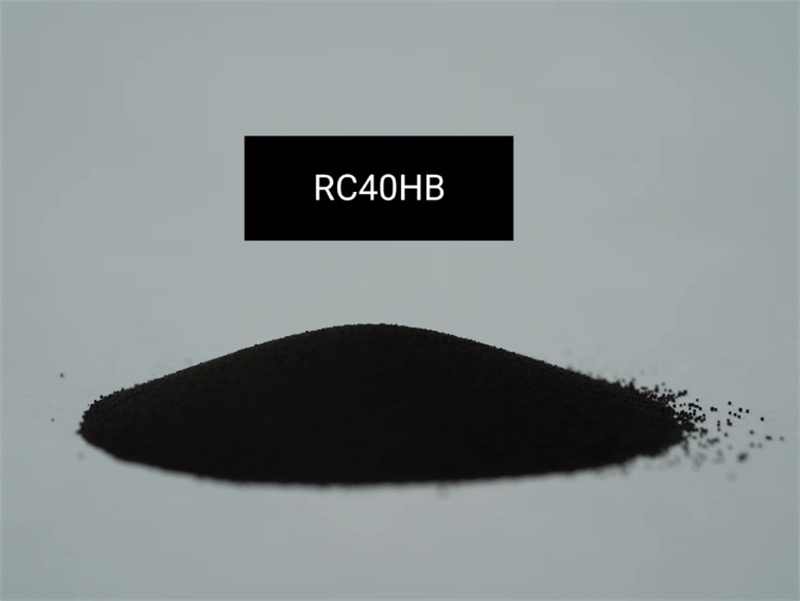Manganese zinc series soft magnetic ferrite is mainly a single-phase solid solution composed of mMnFe2O4 · nZnFe2O4 with spinel structure and a small amount of Fe3O4. Inductive magnetic cores and other magnetic components made of manganese zinc series ferrite magnetic materials have application frequencies ranging from hundreds of Hz to thousands of MHz Important soft ferrite materials account for over 60% of the total production of soft ferrite magnetic materials, therefore, the development of manganese zinc ferrite is more noteworthy. Manganese zinc ferrite materials are mainly divided into high-frequency low-power ferrite (also known as power ferrite, with initial magnetic permeability usually less than 5000, mostly around 2000) and high magnetic permeability that is high μ There are two types of ferrite: i (initial permeability). The initial permeability ui is the limit value of the magnetic material's permeability (B/H) in the initial region of the magnetization curve, i.e
μ 0 is the permeability in vacuum (4 π) × 10-7H/m), unit: Heng/meter
H is the magnetic field strength (A/m)
B is the magnetic flux density (T)

Manganese zinc ferrite material
(1) Overview of manganese zinc power ferrite
The main characteristic of power ferrite is that it still maintains very low power consumption under high frequency (several hundred kHz) and high magnetic induction (several thousand Gauss, 1T=10000Gs) conditions, and its power consumption decreases with the temperature rise of the magnetic core within a certain temperature range, reaching around 80 ℃ Point, thus forming a virtuous cycle. The main use of power ferrite is power inductance devices represented by various switching power transformers and color TV flyback transformer. It is widely used and is the current output Soft magnetic ferrite. The following is the temperature and magnetic core loss relationship of the TP4 series of Tiantong "TDG".
The newly released industry standard "Classification of Soft Magnetic Ferrite Materials" in China divides power ferrite materials into five categories: PW1~PW5, and its applicable working frequency is gradually increasing. If applicable, PW1 materials with frequencies ranging from 15 to 100kHz; Suitable for PW2 materials with frequencies ranging from 25 to 200kHz; Suitable for PW3 materials with frequencies ranging from 100 to 300kHz; Suitable for PW4 materials with frequencies ranging from 300 to 1MkHz; Suitable for PW5 materials with frequencies ranging from 1 to 3MHz. At present, domestic enterprises are able to produce materials equivalent to PW1~PW3, while only some enterprises have small-scale trial production of PW4 materials. PW5 materials need further development and production. The power ferrite materials of TDK in Japan are in both quality and production Status.
(2) Manganese zinc high permeability ferrite
Magnetic permeability is one of the main basic parameters for measuring the performance of soft magnetic ferrite materials, usually referred to as the initial magnetic permeability( μ i) Mn-Zn ferrite materials larger than 5000 are called high permeability ferrite. The main characteristic of high permeability ferrite is that its magnetic permeability is particularly high, usually reaching over 10000, which can reduce the volume of the magnetic core significantly and meet the needs of the development of miniaturization and lightweight release of components. In addition, in order to meet the usage requirements, the surface quality of such high permeability small magnetic cores must be good, smooth and round, without burrs, and a uniform, dense, insulating, and aesthetically pleasing organic coating must be applied on their surface, which is a technical difficulty. High permeability ferrite is an urgently needed and widely used functional material in the electronic industry and technology. It can be used as a new generation of electronic products such as broadband transformers, micro low-frequency transformers, small circular pulse transformers, and micro inductance components in communication equipment, measurement and control instruments, household appliances, and new energy-saving lighting fixtures. High magnetic permeability means that it is more suitable to be used as a transformer (with the same specification of magnetic cores with the same number of turns to obtain higher inductance and reduce excitation current, or with the same excitation inductance, smaller magnetic cores can be selected. Transformers are not energy storage devices but energy transmission devices), rather than power inductors.

gotop